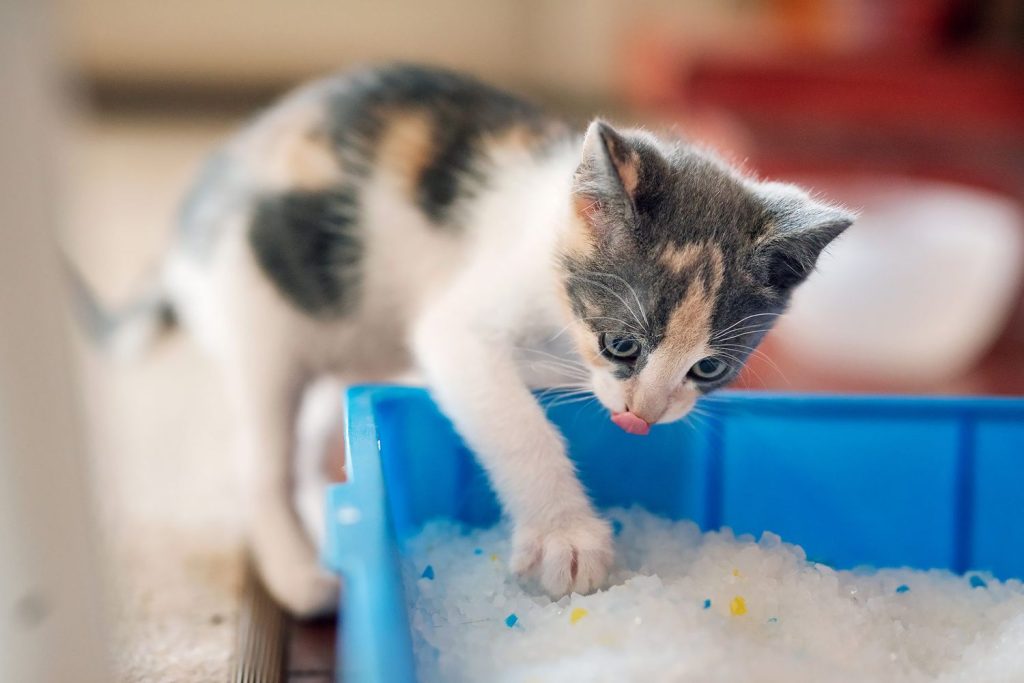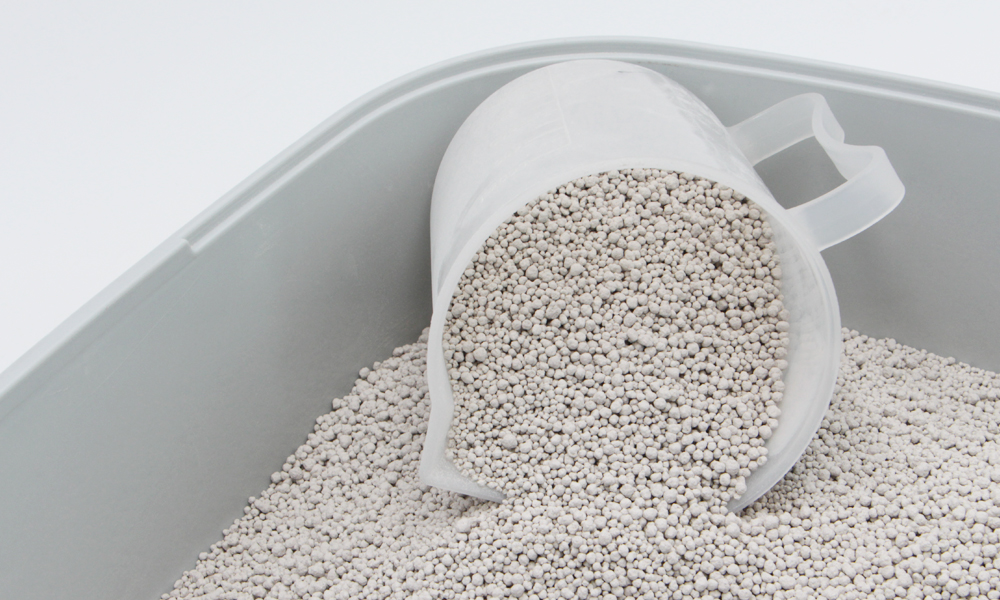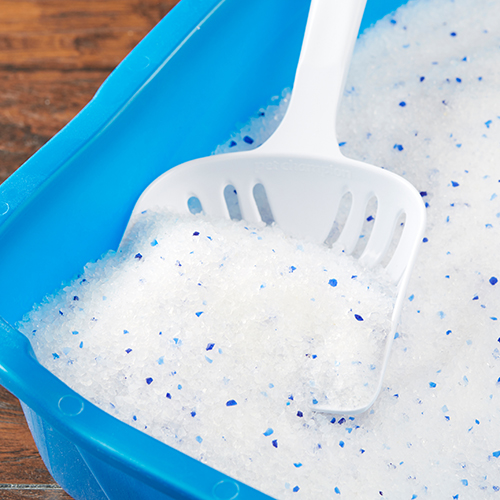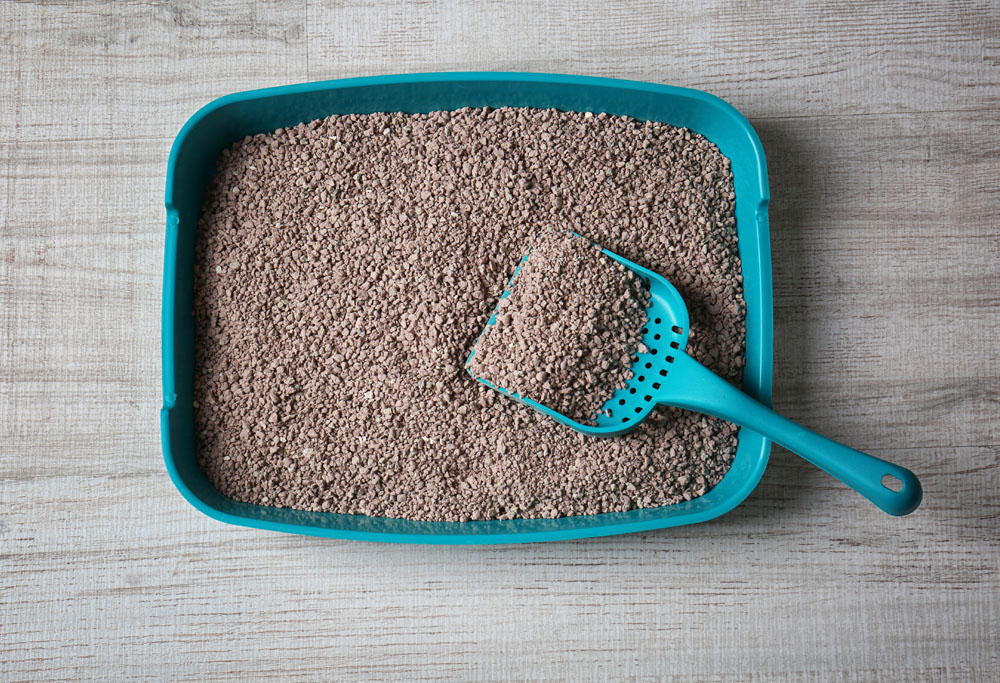With the large selection of different and high-quality litter for your cat, it’s not that easy to keep track of everything. Many cats have an individual taste when it comes to their kitty litter. Cats are very clean and tidy animals and a feel-good to use a litter box is a must.
Table of Contents
Which litter is right for your cat?
Good, high-quality litter is essential for a clean litter box. Only then will no unpleasant smells develop and your kitten will actually enjoy using the quiet place. Not only the cat, but also the pet owner should be satisfied with the type of cat litter. It is therefore important to find out the various criteria and properties of the preferred cat litter and to assess whether the litter meets kitty criteria.
There are many types of cat litter and finding the perfect litter is a challenge. In order to find the right type of litter for your individual needs, you need to consider the following criteria:
Clumping or non-clumping?
This is one of the first questions you ask yourself when buying your cat litter box and cat litter. The way the litter works affects how often you clean the litter box and how the litter box should smell.
Lumping litter is the most commonly used litter. For example, it consists of clay minerals which form lumps when the litter comes into contact with liquid such as urine. This makes it easy to catch the business and remove it with a litter scoop. If the lumps are disposed of daily, the remaining litter only needs to be changed in stages. This means the litter is very productive.
Non-lumping litter consists of absorbent granules that lock in the liquid and bind odors. There is no need to remove the lumps every day, but the entire litter in the litter box has to be replaced completely on a regular basis. Experience has shown that litter consumption is higher with non-lumping litter types made from silicate or wood pellets than with lumping bentonite cat litter.

Coarse-grained litter or would you prefer a fine litter?
Clumping litter comes in different grain sizes – from very coarse to ultra-fine. Basically, the finer the litter, the tighter the lumps in the toilet. Non-lumping litter often comes as grit or in the form of small silicate beads. Of course, fine grains and beads are gentler on sensitive cat paws than coarse grains or angular grit. Unfortunately, they are also spread more quickly through the paws and fur in the home, which is why cat owners of long-haired cats tend to prefer coarse-grained litter – a toilet rug or a litter mat can help.
Which material should it be – bentonite, vegetable or silicate litter?
You can choose between mineral cat litter, plant-based cat litter and silicate-based litter types.
Mineral cat litter
Mineral cat litter is the top seller and is very well positioned in terms of price and listing. The litter consists of natural clay minerals such as bentonite. It is porous and can therefore absorb very large amounts of liquid safely and quickly. The litter binds urine and feces into lumps which can be easily and conveniently disposed of. The litter is available with added fragrance or neutral. In addition, mineral cat litter is inexpensive, but unfortunately also very heavy and therefore usually a challenge to transport. Mineral cat litter must be disposed of in the trash and not in the compost.

Silicate litter
Silicate litter is very effective and consists mainly of quartz sand and can also absorb large amounts of liquid and odors quickly and safely. In order for silicate sand to fulfill its function, it should be turned over every now and then so that it absorbs consistently well. In addition, it usually does not lump and therefore needs to be completely changed much more often than clumping litter. It is lighter than mineral litter and very low in dust, which is why it is well suited for allergy sufferers or people or cats with respiratory problems

Natural litter
So-called natural litter has the great advantage that it is completely biodegradable because it consists of wood or waste paper fibers, straw or other natural and plant-based materials. That’s why this cat litter is very environmentally friendly, whether in clumping cat litter or non-lumping form. The lumping clay litter of natural fiber litter is not achieved through chemical additives, but rather through naturally derived binders. Cat litter made from natural fibers is a very ecological solution and is particularly popular with environmentally conscious cat owners.

Would you prefer scented or unscented litter?
Some kitten litters are enriched with fragrances. But what is good for the living atmosphere and for people is not something that every pet likes. Kittens have a very sensitive nose and are very picky. Go for a natural litter or one with a light fragrance. There are cat litters that only develop their fragrance when the cat stands with its paws and this creates friction. In the worst case scenario, your cat will avoid the toilet if the litter doesn’t suit her. An alternative to flavored litter are cat toilet deodorants, with which you can individually select the fragrance and dosage.
Ultimately, your cat has the final say!
No matter which cat sand you are interested in, your pet definitely has the final say. The best litter is of no use to you if your cat doesn’t agree with it and refuses to use the litter box or even starts to defecate next to the toilet. Since cats’ preferences are very different, you can’t avoid testing a little and slowly trying your hand at it until you find the perfect litter. To get your cat used to a new litter, you can mix the old cat litter with the new one for a while and increase the proportion of new litter until the cat slowly gets used to it and accepts the new litter. The toilet should always be clean and filled several centimeters high so that your furry friend can scratch after business like in the wild and feel completely comfortable.
Type of cat litter
There are various types of cat litters available, each with its own set of characteristics and benefits. The choice of best cat litter often depends on factors such as your cat’s preferences, any allergies or sensitivities they may have, and your personal preferences as a cat owner. Here are some common types of cat litters:
Clumping Clay Litter:
- Composition: Made from natural clay (sodium bentonite).
- Clumping Ability: Forms solid lumps when in contact with moisture, making it easier to scoop and clean.
- Fragrance Control: Often contains additives for controlling fragrances.
Silica Gel or Crystal Litter:
- Composition: Made from silica gel or crystals.
- Clumping Ability: Absorbs moisture but doesn’t form traditional lumps. Instead, it turns urine into gel-like crystals.
- Fragrance Control: Excellent fragrance control due to moisture absorption.
Biodegradable or Natural Fiber Litter:
- Composition: Made from materials such as recycled paper, wood, corn, wheat, or grass.
- Clumping Ability: Varies; some types lump, while others absorb moisture without forming clumps.
- Fragrance Control: Can be effective, with some variations containing natural fragrance-absorbing properties.
Recycled Paper Litter:
- Composition: Made from recycled paper products.
- Clumping Ability: Generally doesn’t form hard lumps but absorbs moisture.
- Fragrance Control: Moderate fragrance control, often enhanced with baking soda.
Flushable Litter:
- Composition: Often made from materials like corn or wheat.
- Clumping Ability: Forms lumps that claim to be flushable in small quantities.
- Fragrance Control: Varies; some brands offer enhanced fragrance control.
Scented Litter:
- Composition: Can be clay-based or other materials with added fragrance.
- Clumping Ability: Depends on the variety of litter.
- Fragrance Control: Enhanced with added fragrances, which can be helpful if your cat is good with scented options.
Non-Clumping Clay Cat Litter:
- Composition: Traditional clay without additives for clumping.
- Clumping Ability: Does not form solid clumps.
- Fragrance Control: Some fragrance control but less effective compared to clumping varieties.
Bamboo-Based Litter:
- Composition: Made from bamboo fibers.
- Clumping Ability: Some varieties clump, while others absorb moisture without forming clumps.
- Scent Control: Can offer natural scent control properties.
When choosing a cat litter, it’s essential to consider factors such as clumping ability, scent control, dust levels, and your cat’s comfort. Cats can be particular about their litter, so you may need to experiment to find the type that works best for both you and your feline companion. Additionally, if your cat has sensitivities or allergies, opting for a hypoallergenic or dust-free option may be beneficial.
Variety of Litter used to Multiple Cats
Choosing the right cat litter for a multi-cat household is crucial to ensure that all your feline companions are comfortable and that the litter box remains clean and odor-free. Here are some types of cat litter that are well-suited for multiple cats:
Clay Cat Clumping Litter:
- Advantages: Forms solid clumps, making it easy to scoop and maintain cleanliness. It often has good odor control properties.
- Considerations: Some cats may be sensitive to the dust produced by clay litters.
Silica Gel or Crystal Litter:
- Advantages: Excellent moisture absorption and odor control. The larger crystals are less likely to be tracked outside the litter box.
- Considerations: Some cats may not like the texture of the crystals.
Corn-Based or Wheat-Based Litter:
- Advantages: Biodegradable, clumping ability, and good odor control. Some options are flushable.
- Considerations: May be more expensive than traditional clay litters.
Biodegradable or Natural Fiber Litter:
- Advantages: Made from materials like recycled paper, wood, or grass. It’s environmentally friendly and can have good clumping ability.
- Considerations: Texture and clumping ability can vary between different brands.
Bamboo-Based Litter:
- Advantages: Biodegradable, some varieties offer clumping ability, and it can have natural odor control properties.
- Considerations: Texture may be different from traditional litters.
Multi-Cat Formulas:
- Advantages: Some cat litters are specifically formulated for multi-cat households, offering enhanced clumping, fragrance control, and durability.
- Considerations: Read product labels to ensure compatibility with your cats’ preferences and any potential sensitivities.
Flushable Litter:
- Advantages: Some flushable litters can be convenient for disposal.
- Considerations: Ensure it is safe for your plumbing system and municipal wastewater treatment.
Scented Litter:
- Advantages: Can help control fragrances in a multi-cat environment.
- Considerations: Some cats may be sensitive to fragrances, so monitor your cats’ reactions.
When selecting cat litter for multiple cats, consider the following tips:
- Low Dust: Choose a low-dust or dust-free litter to minimize respiratory issues, especially if you have cats that are sensitive to dust.
- Odor Control: Opt for a litter with effective fragrance control properties to manage the smelly litter with multiple cats.
- Texture Preferences: Cats can have preferences for certain litter textures. Experiment with different options to see what your cats prefer.
- Regular Cleaning: Scoop the litter boxes daily and change the litter regularly to maintain cleanliness and prevent fragrances.
- Multiple Litter Boxes: Provide multiple litter boxes, ideally one per cat, to prevent competition and ensure that each cat has a clean place to go.
Remember that each cat is unique, and preferences can vary. It may take some trial and error to find the litter that works best for your multi-cat household. Additionally, monitor your cats for any signs of discomfort or aversion to the chosen litter. If you notice any issues, consider consulting with your veterinarian for guidance.
FAQs
Q: What is the best type of cat litter for my cat?
A: The best type of cat litter depends on your cat’s preferences and your specific needs, such as fragrance control, dust levels, and ease of cleaning. Some common types include clay, clumping, silica gel, and plant-based litter.
Q: Is clay cat litter a good choice for my cat?
A: Clay cat litter is a popular choice as it is relatively low-cost, controls fragrance well, and absorbs moisture effectively. However, some cats may not like the texture, and dust can be a concern for cats and owners with respiratory issues.
Q: How can I tell if my cat prefers a certain type of litter?
A: Cats may show a preference for a specific variety of litter by consistently using the litter box or avoiding it altogether. You can experiment with different types to see which one your cat prefers.
Q: Should I use one litter box for multiple cats or provide individual boxes?
A: It’s generally recommended to have one litter box per cat, plus an extra one. Some cats may not want to share, and having multiple boxes can help prevent territorial disputes and encourage good litter box habits.
Q: How often should I change my cat’s litter?
A: It’s best to scoop the litter box daily and completely change the litter at least once a week. With some variety of litter, such as clumping litter, you may only need to change the entire box every few weeks.
Q: What is the best cat litter for controlling odors?
A: Clumping litters, especially those with added fragrance control ingredients, are often effective at controlling fragrances. Silica gel and plant-based litters can also help minimize fragrances.
Q: My cat has allergies. What type of cat litter is best for sensitive cats?
A: For cats with respiratory issues or allergies, consider using dust-free or low-dust litters, such as silica gel or plant-based options. Avoid fragrance litters that may irritate sensitive noses.
Q: Can I use carpet remnants or cat trees as a form of cat litter?
A: While it’s important to provide scratching posts and designated areas for your cat to scratch, it’s not a substitute for a proper litter box. Cats have a natural instinct to bury their waste, and it’s essential to provide a suitable litter box with appropriate litter material.
Q: What can I do if my kitten refuses to use the litter box?
A: If your kitten is having trouble using the litter box, try adjusting the variety of litter, the location of the box, or providing multiple boxes. Positive reinforcement when they use the litter box can also help encourage good litter habits.
Q: How can I find the right cat litter for my new cat?
A: Experiment with different types of litter to determine which one your cat prefers. Monitor your cat’s behavior and any signs of discomfort to find the best option, and consult with your veterinarian if you have specific concerns about your cat’s litter preferences.